ARTICLES
Here is how to start scuba diving this spring
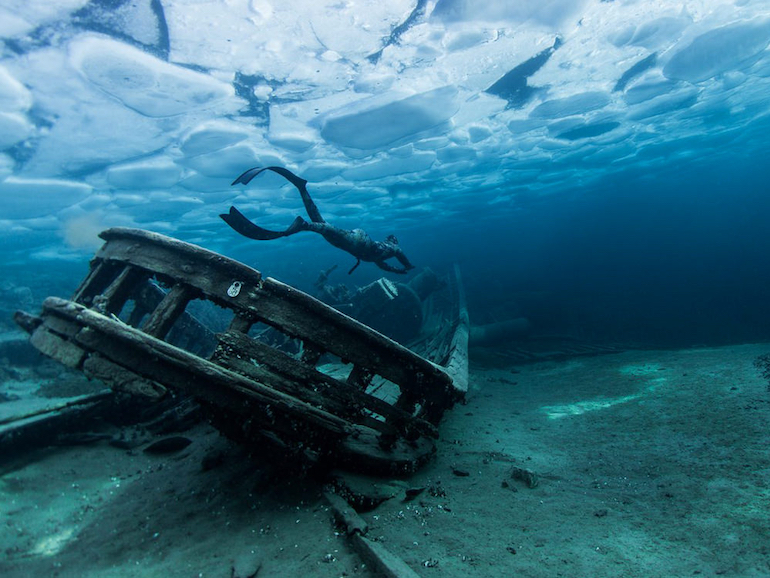
Let’s talk about everything you need to know to get started including equipment needed, safety considerations, how to go from a beginner to a more advanced diver, and the top 10 spots for scuba diving in Canada.
Getting Started with Scuba Diving
Before you start scuba diving, there are a few things you need to do to ensure your safety and enjoyment.
These include
1. Get certified: To scuba dive, you need to be certified. There are several scuba diving certification agencies, such as PADI, NAUI, and SSI, that offer courses and certifications for beginners. These courses teach you the basics of scuba diving, including safety procedures, equipment use, and diving techniques.
2. Choose the right gear: You need the right gear to scuba dive safely. This includes a wetsuit, fins, mask, regulator, buoyancy control device (BCD), and dive computer. It's important to choose gear that fits properly and is comfortable to wear.
3. Practice in a pool: Before you dive into open water, it's a good idea to practice in a pool or other controlled environment. This allows you to get used to the equipment and practice important diving skills.
4. Dive with a buddy: It's important to always dive with a buddy for safety reasons. You can watch each other's backs and help each other in case of an emergency.
5. Plan your dives: Before each dive, plan your route and set your dive limits. Always stay within your limits and don't exceed your training and experience level.
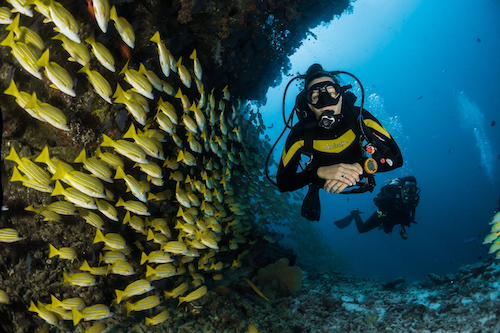
Rich Henning, is the training centre manager at Divers Den in Tobermory, Ontario. He says, what he loves most about the sport is the people.
“There are so many things that I love about diving that it is hard to narrow down to a few points that you can fit into an article,” Henning says. “First and foremost, I would say it’s the people. No matter where I go, as soon as you set foot in a dive shop you will meet someone to share stories with who also has a love for the sport and the underwater world. As I mentioned before, I even met my wife through diving. The feeling of calm that you get when you are floating weightlessly underwater and all you can hear is the sound of your breathing. It's something you can't put into words. It's one of the things in life that you have to experience to truly understand."
He adds that the sport isn’t as hard to learn as some people might think.
“Most of it you already know how to do, breathe in, breathe out, and repeat as necessary. Joking aside, I have found that the hardest thing for most people to learn is to not hold their breath and to trust the equipment. I think this comes from a lifetime of being told that you can't breathe underwater,” he says. “The course skills are broken down into pieces that are easy to master and build on each other, ensuring that you keep having success and building your confidence. All of the skills that you need to learn are introduced to you in confined water like a pool or someplace with pool-like conditions so that you can master the skills in a comfortable place.”
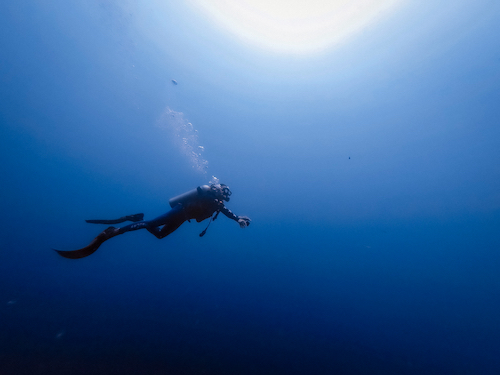
Equipment Needed for Scuba Diving
Scuba diving requires specialized equipment to ensure your safety and enjoyment.
Here's a list of the equipment you'll need:
1. Wetsuit: A wetsuit keeps you warm underwater by trapping a layer of water between your body and the suit. This water is warmed by your body heat, providing insulation.
2. Fins: Fins allow you to move more efficiently through the water by providing propulsion.
3. Mask: A mask allows you to see clearly underwater by creating an air pocket around your eyes.
4. Regulator: A regulator allows you to breathe air from your tank by reducing the high-pressure air to a breathable pressure.
5. Buoyancy Control Device (BCD): A BCD allows you to control your buoyancy by inflating or deflating the device.
6. Dive computer: A dive computer calculates your depth and dive time, allowing you to stay within your dive limits.
Dive watch
Dive into the depths with the latest Citizen Promaster Dive Watch in a stylish rose gold-tone stainless steel case. This vibrant watch features a grey 3-hand dial with date function, luminous hands and markers, and a durable grey polyurethane strap for a comfortable fit. Powered by Eco-Drive technology that never needs a battery, it's perfect for both land and underwater adventures. With water resistance up to 200 meters, ISO compliance, and Calibre E168, this timepiece is designed for high-performance in any environment.
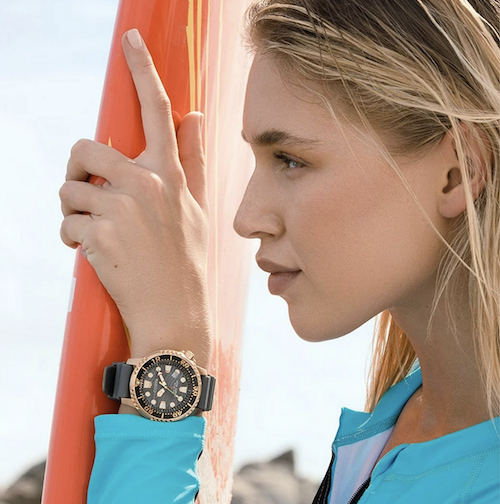
Safety Considerations for Scuba Diving
Scuba diving is generally safe when proper precautions are taken.
Here are a few safety considerations to keep in mind:
1. Never hold your breath: Always breathe normally and never hold your breath while scuba diving.
2. Equalize your ears: As you descend, the pressure on your ears increases. To equalize the pressure, you need to periodically pinch your nose and blow gently.
3. Watch your depth and time: Always monitor your depth and dive time to avoid exceeding your limits.
4. Follow the buddy system: Always dive with a buddy and keep an eye on each other.
5. Don't touch marine life: To avoid disturbing or damaging marine life, never touch anything underwater.
Top 10 Spots for Scuba Diving in CanadaCanada is home to some of the best scuba diving spots in the world. Here are the top 10 spots for scuba diving in Canada:
1. Tobermory: Located in Lake Huron, Tobermory is known for its numerous shipwrecks that are popular dive sites. Some of the popular wrecks to explore include the Sweepstakes, Arabia, and the Niagara II.
2. Fathom Five National Marine Park: Also located in Lake Huron near Tobermory, Fathom Five National Marine Park is a popular spot for scuba diving due to its crystal-clear waters and diverse marine life. The park is home to a number of shipwrecks as well as underwater caves and grottos.
3. St. Lawrence River: The St. Lawrence River is a popular destination for divers due to its clear waters and abundant marine life. Divers can explore shipwrecks, underwater caverns, and more.
4. Brockville: Located in the Thousand Islands region of the St. Lawrence River, Brockville is another popular destination for scuba diving. Divers can explore shipwrecks, underwater rock formations, and see a variety of fish species.
5. Saguenay Fjord: Located in Quebec, the Saguenay Fjord is a popular spot for scuba diving due to its unique underwater topography and marine life.
6. Vancouver Island: Vancouver Island is home to some of the best cold-water diving in the world. Divers can explore kelp forests, and shipwrecks as well as see a variety of marine life such as sea lions and octopuses.
7. Newfoundland: Newfoundland is home to some of the best wreck diving in the world, with dozens of shipwrecks to explore. Divers can also see a variety of marine life such as whales, dolphins, and seals.
8. Bay of Fundy: The Bay of Fundy is known for its strong tides and rich marine life. Divers can explore underwater caves and rock formations, and see a variety of fish species.
9. Georgian Bay: Georgian Bay is home to numerous shipwrecks and underwater rock formations, making it a popular destination for scuba diving. Divers can also see a variety of fish species.
10. Howe Sound: Located in British Columbia, Howe Sound is a popular spot for scuba diving due to its diverse marine life and underwater rock formations.
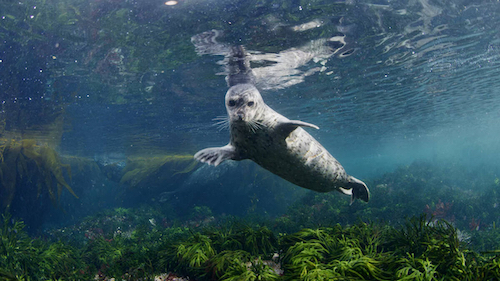
Next-level scuba diving
Once established as a beginner diver, one way to take scuba diving to the next level is by obtaining advanced diving certifications. Advanced certifications allow divers to explore deeper depths, stronger currents, and more challenging dive sites. These certifications can also enable divers to participate in more advanced diving activities such as wreck diving, night diving, and underwater photography.
Some of the advanced diving certifications available include:
· Advanced Open Water Diver: This certification allows divers to explore deeper depths up to 30 meters (100 feet), and introduces them to various types of diving such as underwater navigation, drift diving, and night diving.
· Rescue Diver: This certification teaches divers important skills such as emergency response and rescue techniques. Rescue divers learn how to handle emergency situations and assist other divers in distress.
· Master Scuba Diver: This certification is the highest non-professional level in recreational scuba diving. It is awarded to divers who have completed several specialty courses and have extensive diving experience.
Another way to take scuba diving to the next level is by participating in technical diving. Technical diving involves exploring deeper depths and longer dive times using specialized equipment and training. Technical divers use equipment such as rebreathers, which recycle exhaled air and allow for longer dives.
Technical diving also involves additional training such as decompression diving, gas blending, and advanced navigation techniques. Technical diving can be dangerous and requires extensive training, but it allows divers to explore areas that are beyond the reach of recreational divers.
Another option for taking scuba diving to the next level is by participating in scientific diving. Scientific diving involves diving with a purpose, such as collecting data or conducting research underwater. Scientific divers must undergo specialized training and follow strict safety protocols.
Scientific diving can be a rewarding experience for those interested in marine biology or conservation. Scientific divers can work with research organizations, universities, or government agencies to study marine ecosystems and contribute to the understanding and conservation of the underwater world.
Scuba diving is a fantastic activity that can be taken to the next level by obtaining advanced certifications, participating in technical diving, or diving with a purpose through scientific diving. These options allow divers to explore deeper depths, more challenging dive sites, and participate in more advanced diving activities. However, it is important to remember that these options also come with increased risks and require extensive training and preparation. By taking the necessary precautions and following proper safety protocols, divers can take their scuba diving experience to new heights.

 Tweet
Tweet Share
Share